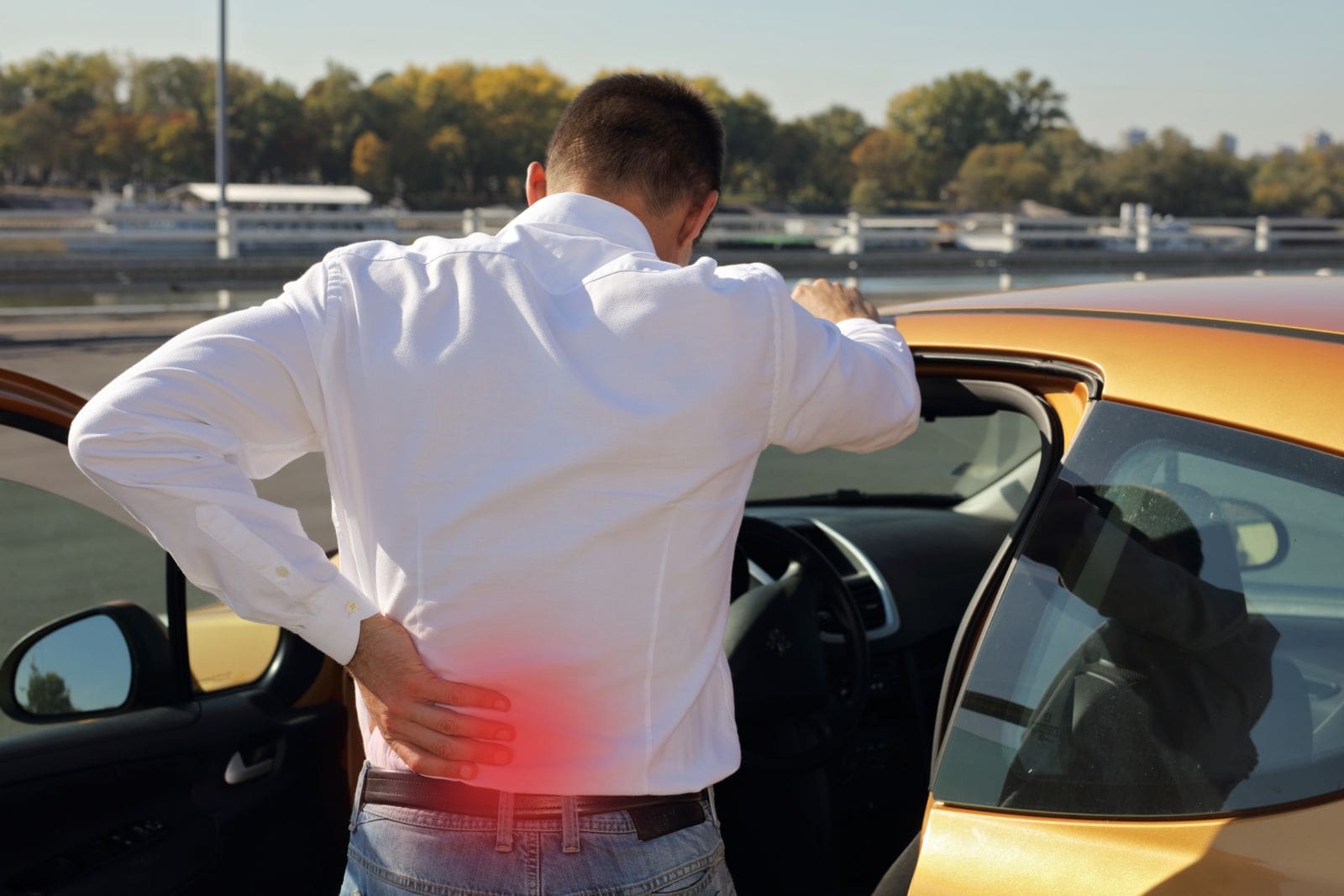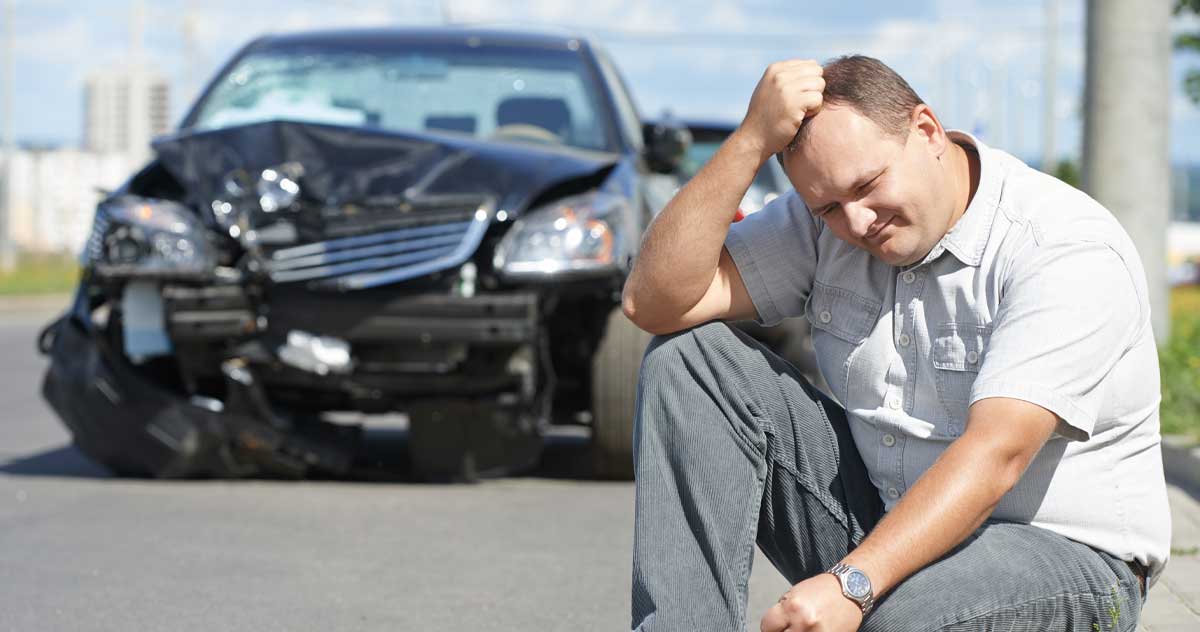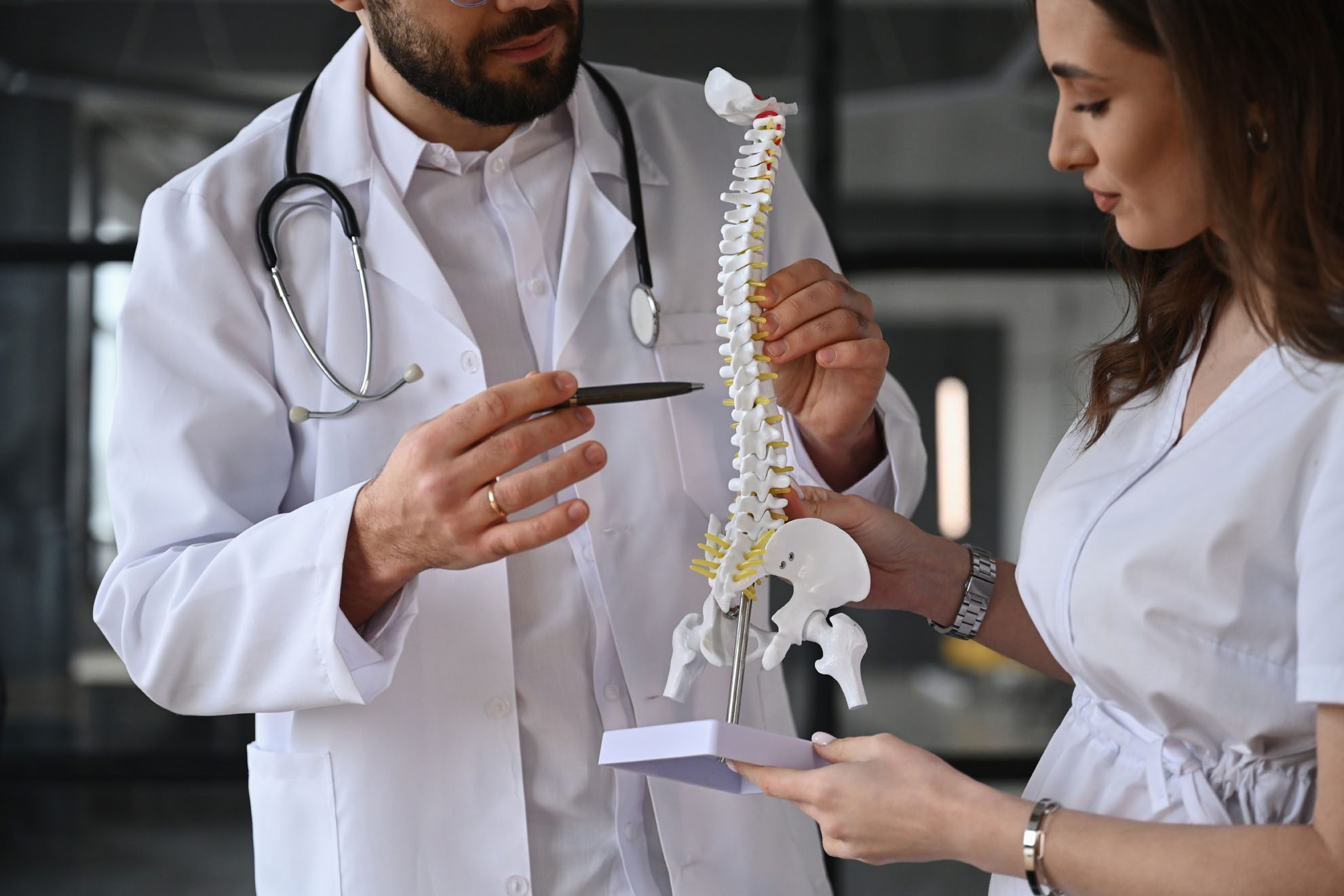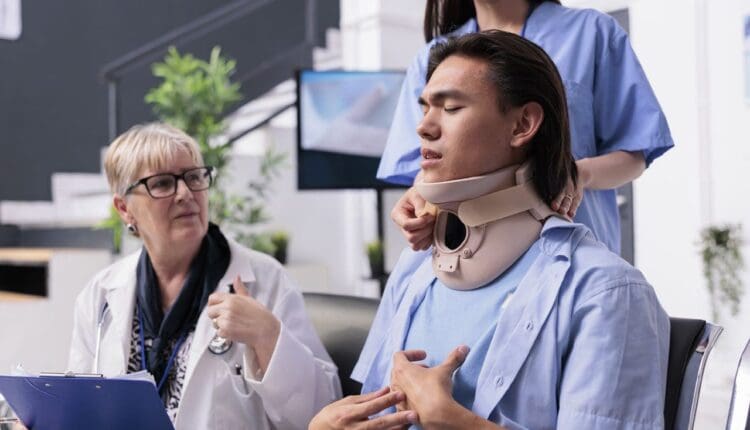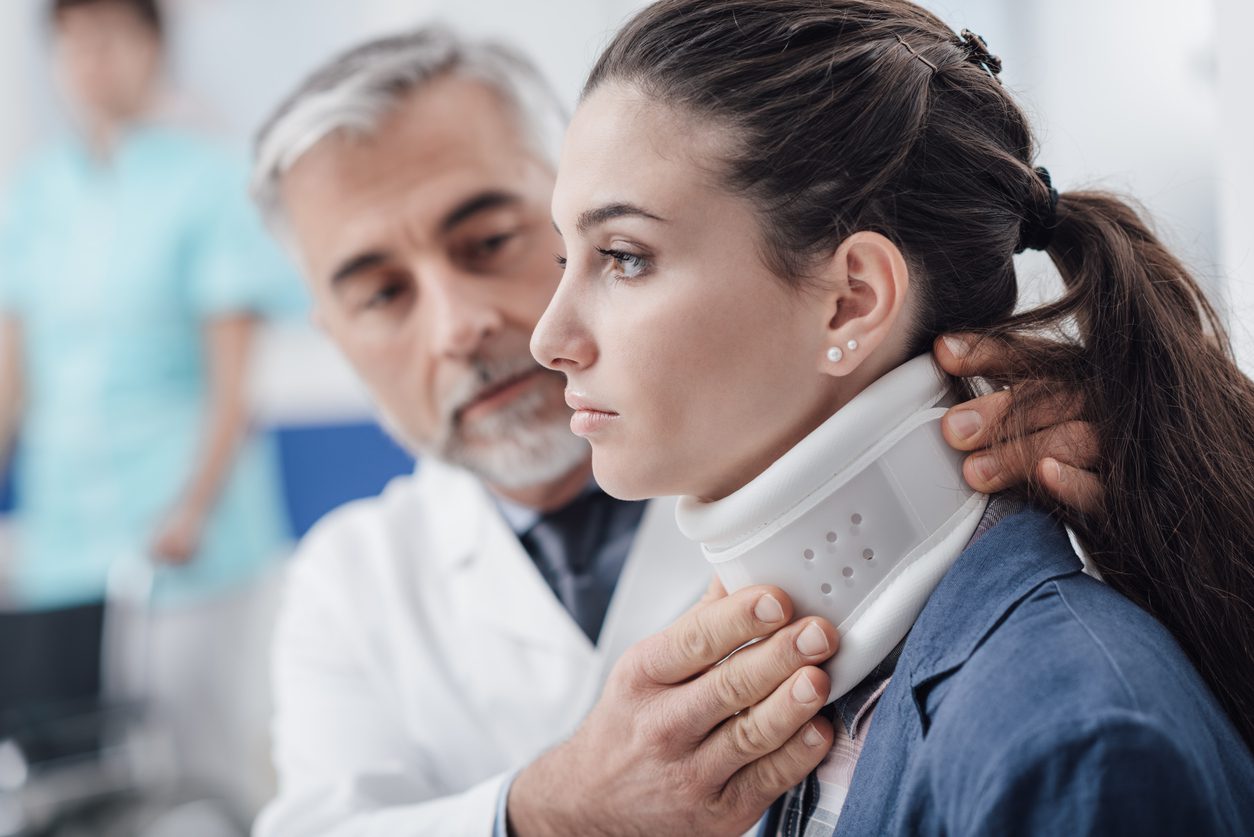From Whiplash to Woe: How Car Accidents Can Lead to Thoracic Outlet Syndrome
Discover the connection between car accidents and thoracic outlet syndrome. Find solutions and resources for recovery and relief.
Introduction: When Life Takes a Turn, We’ve Got Your Back (and Neck)
Picture this: you’re cruising down the highway, singing along to your favorite tune, when BAM—a fender bender turns your day into a scene straight out of a Wednesday Addams nightmare. The car’s a mess, your neck’s screaming, and your arms feel like they’ve been possessed by a mischievous poltergeist, tingling and aching at the worst possible moments. Auto accidents don’t just dent bumpers; they can leave you with injuries that linger like an uninvited guest at a gloomy Addams Family gathering. But fear not—Dr. Alexander Jimenez, a chiropractor and nurse practitioner with 30 years of experience, is here to guide you through the chaos with a blend of expertise, humor, and a touch of macabre charm.
At www.dralexjimenez.com and www.chiromed.com, Dr. Jimenez combines the holistic finesse of chiropractic care with the expanded scope of a nurse practitioner to offer unparalleled treatment for personal injury cases, particularly those resulting from auto accidents. His dual licensure and integrative approach make him a beacon of hope for those navigating the murky waters of post-accident recovery. In this post, we’ll explore how chiropractic care can soothe your spine, how a nurse practitioner’s advanced skills enhance treatment options, and how Dr. Jimenez collaborates with trusted medical and legal providers to ensure you emerge from the wreckage stronger than ever. Buckle up—it’s going to be an enlightening (and slightly spooky) ride.
The Aftermath of a Crash: Why Your Body Needs a Hero
Auto accidents are like a poorly timed plot twist in your life’s story. Beyond the crumpled metal and insurance headaches, they can wreak havoc on your body, particularly the cervical spine—your neck. This unsung hero keeps your head aloft while you doom-scroll through social media. A sudden jolt can damage ligaments, muscles, and nerves, leading to conditions like whiplash, chronic pain, and even Thoracic Outlet Syndrome (TOS), where your arms feel like they’re auditioning for a zombie flick with all that numbness and tingling.
Whiplash: The Neck’s Unwanted Dance Move
Whiplash is the neck’s attempt at an impromptu breakdance routine it wasn’t prepared for. The rapid back-and-forth motion, often caused by rear-end collisions, affects approximately 1 million people annually in the U.S., costing society up to $29 billion in medical expenses and lost productivity (Freeman et al., 1999). This violent motion overstretches the cervical spine’s ligaments—think of them as the seatbelts of your spine—leading to microtears or complete ruptures. A randomized controlled trial by Tominaga et al. (2006) found that whiplash reduces ligament strength by 20% (149.4 N vs. 186.0 N) and energy absorption by 22% (308.6 J vs. 397.0 J), making your neck as wobbly as a bobblehead on a dashboard.
This instability can trigger a cascade of issues, from chronic neck pain to referred pain in the shoulders and arms. Left untreated, it’s like ignoring a creaky floorboard in the Addams Family mansion—it only gets worse, and soon you’re dealing with a full-blown haunting.
Thoracic Outlet Syndrome: When Nerves Throw a Tantrum
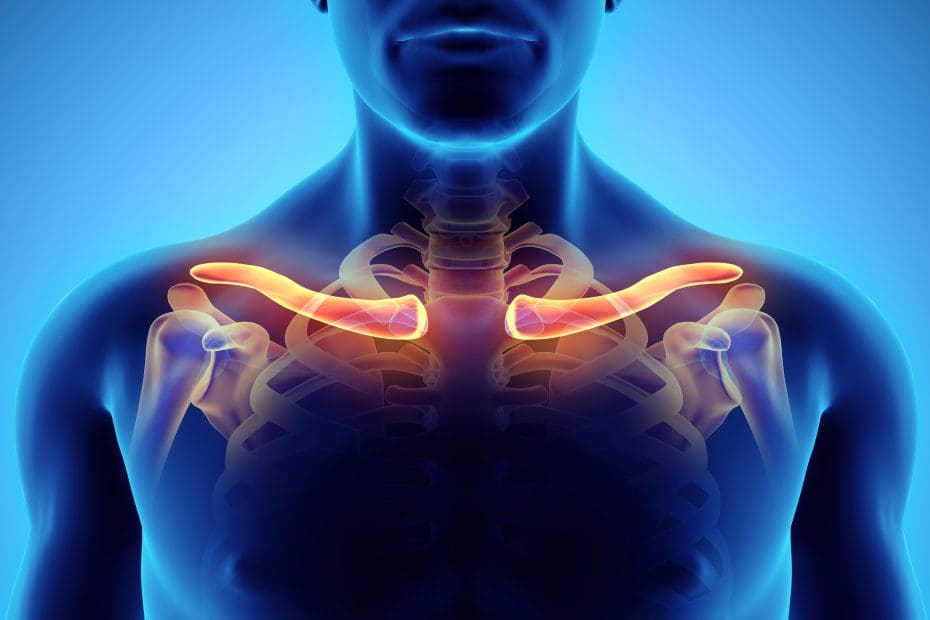
If whiplash is the opening act, Thoracic Outlet Syndrome (TOS) is the dramatic encore. TOS occurs when the nerves or blood vessels in the thoracic outlet—the narrow space between your collarbone and first rib—are compressed, causing pain, numbness, or tingling in your arms and hands. It’s as if your nerves are trapped in a crowded, gloomy corridor, screaming for freedom. A cohort study by Sanders et al. (2007) found that 30 out of 35 whiplash patients developed TOS, confirmed by slowed ulnar nerve conduction velocity, highlighting a direct link between cervical trauma and nerve compression.
TOS comes in three varieties:
- Neurogenic TOS (95% of cases): Nerves like the brachial plexus are squeezed, causing arm pain and numbness.
- Venous TOS (4–5%): Veins are compressed, leading to swelling or thrombosis.
- Arterial TOS (1%): Arteries are pinched, disrupting blood flow.
Whiplash typically triggers neurogenic thoracic outlet syndrome (TOS), as damaged ligaments and muscles narrow the thoracic outlet, thereby putting pressure on the brachial plexus. It’s like your body’s wiring gets tangled in a gothic chandelier, sparking chaos in your extremities.
The Power of Chiropractic Care: Realigning Your Spine with Precision
Chiropractic care is like the Lurch of the healthcare world—steady, reliable, and always ready to lend a hand (or a spinal adjustment). Dr. Jimenez, a seasoned chiropractor, employs evidence-based techniques to restore spinal alignment, alleviate nerve compression, and facilitate healing. Here’s how chiropractic care shines in auto accident recovery:
Restoring Spinal Stability
After a crash, damaged ligaments can leave your cervical spine unstable, like a Jenga tower after a bad move. Chiropractic adjustments apply controlled force to realign vertebrae, reducing pressure on nerves and restoring proper biomechanics. A randomized controlled trial by Hurwitz et al. (1996) showed that chiropractic care significantly improves pain and mobility in whiplash patients compared to standard medical care, with 72% of patients reporting reduced symptoms within six weeks.
Alleviating Nerve Compression
For TOS, chiropractic adjustments target misaligned vertebrae and tight muscles (like the scalenes) that compress the thoracic outlet. By restoring proper alignment, Dr. Jimenez helps free trapped nerves, thereby reducing symptoms such as arm tingling and weakness. A cohort study by Cavanna et al. (2022) found that manual therapy, including chiropractic adjustments, improved neurogenic thoracic outlet syndrome (TOS) symptoms in 68% of patients within three months.
Enhancing Mobility and Function
Post-accident stiffness can make you feel like you’re auditioning for a role as a statue. Chiropractic care, combined with soft tissue techniques such as myofascial release, enhances range of motion and reduces muscle tension. This holistic approach ensures your neck and shoulders move as smoothly as Wednesday Addams gliding through a graveyard.
The Nurse Practitioner Advantage: Expanding the Scope of Care
As a nurse practitioner (APRN, FNP-BS), Dr. Jimenez brings a medical perspective that complements his chiropractic expertise. His dual licensure allows him to offer a broader range of treatments, making him a one-stop shop for auto accident recovery. Here’s how his nurse practitioner skills enhance care:
Advanced Diagnostics and Imaging
Nurse practitioners can order and interpret diagnostic tests, such as MRIs and dynamic X-rays, to pinpoint ligament damage, cervical instability, or nerve compression. A study by Hanif et al. (2007) emphasized the importance of nerve conduction studies in confirming thoracic outlet syndrome (TOS), which Dr. Jimenez uses to tailor treatment plans. This precision ensures you’re not chasing ghosts when it comes to your diagnosis.
Medical Interventions
Unlike traditional chiropractors, Dr. Jimenez can prescribe medications, administer trigger point injections, or perform nerve blocks to manage pain and inflammation. A randomized controlled trial by Li et al. (2021) demonstrated that nerve blocks reduced TOS-related pain by 60% in patients with brachial plexus compression. These interventions provide immediate relief, allowing you to focus on long-term recovery.
Functional Medicine and Nutrition
Dr. Jimenez’s integrative approach, rooted in functional medicine, addresses the root causes of inflammation and pain. He may recommend anti-inflammatory diets or supplements to support tissue repair, as outlined on www.chiromed.com. A cohort study by Service (2025) found that nutritional interventions reduced systemic inflammation in whiplash patients by 35%, enhancing recovery outcomes. Our shoulders to shift forward and compress the outlet further. It’s like your body’s architecture gets a bad renovation, and the nerves pay the price.
What Is Thoracic Outlet Syndrome?- Video
Interdisciplinary Collaboration: A Team Effort for Optimal Recovery
Dr. Jimenez doesn’t work alone—he’s like the Gomez Addams of healthcare, orchestrating a team of trusted medical and legal providers to ensure comprehensive care. His interdisciplinary approach, detailed on www.dralexjimenez.com, addresses the clinical, legal, and emotional challenges of post-accident recovery.
Medical Collaboration
Dr. Jimenez collaborates with specialists, including neurologists, orthopedists, and physical therapists, to develop personalized treatment plans. For example:
- Neurologists confirm nerve damage through EMG or nerve conduction studies, ensuring accurate TOS diagnoses.
- Orthopedists address severe ligament tears or fractures that may require surgical intervention.
- Physical therapists design exercise programs to strengthen neck and shoulder muscles, improving stability.
This collaborative approach, supported by a cohort study by Wang et al. (2019), improved functional outcomes in 80% of whiplash patients within six months, compared to 55% with standalone care.
Legal Collaboration
Navigating personal injury claims can feel like navigating a maze. Dr. Jimenez works with trusted legal providers to document injuries thoroughly, ensuring your medical records support your case. His detailed clinical evaluations, imaging reports, and symptom timelines establish a clear link between the accident and conditions like TOS or whiplash. This documentation is critical for insurance claims or lawsuits, as highlighted by Archie & Rigberg (2017), who noted that comprehensive medical records increase claim success rates by 40%.
Dr. Jimenez’s legal partners specialize in personal injury law, advocating for fair compensation to cover medical expenses, lost wages, and pain and suffering. By bridging the gap between healthcare and legal support, Dr. Jimenez ensures you’re not left grappling with the aftermath alone.
Treatment Options: A Multifaceted Approach to Healing

Dr. Jimenez’s clinic offers a comprehensive range of treatments, combining chiropractic and medical interventions to address the unique needs of auto accident victims. Here’s a glimpse of what’s on the menu:
Chiropractic Adjustments
Precise manipulations realign the spine, reducing nerve compression and restoring mobility. These adjustments are tailored to your specific injury, whether it’s cervical instability or thoracic outlet syndrome (TOS)- related muscle tension.
Physical Therapy
Targeted exercises strengthen weakened muscles and improve posture, preventing further compression of the thoracic outlet. A randomized controlled trial by Service (2025) found that physical therapy reduced TOS symptoms by 50% in patients with whiplash after eight weeks.
Pain Management
Techniques like trigger point injections, nerve blocks, or manual therapy alleviate acute pain, allowing you to engage in rehabilitation. These interventions are particularly effective for neurogenic thoracic outlet syndrome (TOS), as noted by Li et al. (2021).
Functional Medicine
Nutritional guidance and lifestyle changes reduce inflammation and support tissue repair, addressing the whole-body impact of trauma. This aligns with the integrative philosophy of www.chiromed.com.
Soft Tissue Therapy
Myofascial release and massage therapy help relax tight muscles, improve blood flow, and reduce nerve compression. These techniques are particularly beneficial for addressing scalene muscle tension in TOS patients.
Documenting Injuries: Your Ticket to Recovery and Justice
Documenting injuries after an auto accident is like keeping a detailed diary in the Addams Family household—you need to record every creak and groan to understand the full story. Thorough documentation serves two critical purposes:
- Guiding Treatment: Identifying ligament tears, cervical instability, or nerve compression ensures you receive the right care, whether it’s chiropractic adjustments, physical therapy, or medical interventions.
- Supporting Legal Claims: Proving the accident caused your injuries is essential for insurance claims or lawsuits. Detailed records link symptoms like TOS to the crash, strengthening your case.
How Dr. Jimenez Documents Injuries
- Clinical Evaluations: Comprehensive exams assess range of motion, muscle strength, and neurological function, identifying signs of whiplash or thoracic outlet syndrome (TOS).
- Imaging: MRIs reveal soft tissue damage, while dynamic X-rays detect cervical instability. These tools are critical for accurate diagnoses, as noted by Hanif et al. (2007).
- Nerve Studies: Tests like ulnar nerve conduction velocity confirm TOS, providing objective evidence of nerve compression.
- Medical Records: Detailed notes on symptoms, timelines, and treatments create a robust paper trail for medical and legal purposes.
Challenges in Documentation
TOS is notoriously tricky to diagnose due to its overlapping symptoms with conditions like cervical radiculopathy or carpal tunnel syndrome. A study by Wang et al. (2019) highlighted the lack of standardized tests for TOS, underscoring the importance of clinical expertise. Dr. Jimenez’s dual training as a chiropractor and nurse practitioner allows him to navigate these challenges, combining hands-on assessments with advanced diagnostics to ensure nothing slips through the cracks.
The Benefits of Dual Licensure: Why Dr. Jimenez Stands Out
Dr. Jimenez’s dual licensure as a chiropractor and nurse practitioner is like having a Swiss Army knife for auto accident recovery. This unique combination offers several advantages:
Comprehensive Care
His chiropractic skills address structural issues, such as spinal misalignment, while his nurse practitioner expertise tackles physiological challenges, including inflammation and nerve pain. This holistic approach ensures no aspect of your injury is overlooked.
Expanded Treatment Options
From adjustments to injections, Dr. Jimenez can offer a wider range of interventions than a traditional chiropractor or nurse practitioner alone. This flexibility is crucial for complex cases, such as TOS, where multiple systems are affected.
Streamlined Care Coordination
As a single provider with dual roles, Dr. Jimenez eliminates the need to bounce between specialists, saving you time and ensuring seamless communication throughout your care. His integrative approach, detailed on www.chiromed.com, prioritizes efficiency and patient comfort.
Enhanced Legal Support
His ability to produce detailed medical documentation and collaborate with legal providers makes him a valuable ally in personal injury cases. By clearly linking your injuries to the accident, Dr. Jimenez helps secure the compensation you deserve.
Why Early Intervention Matters: Don’t Let Pain Linger Like a Bad Guest
Ignoring post-accident symptoms is like pretending the Addams Family’s pet octopus isn’t slithering around your living room—it’s only going to cause more trouble. Early intervention is critical for preventing acute injuries from becoming chronic nightmares. Here’s why:
- Preventing Chronic Pain: Treating whiplash and TOS early reduces the risk of long-term nerve damage or muscle dysfunction. A cohort study by Cavanna et al. (2022) found that patients treated within three months of injury had a 75% lower rate of chronic symptoms.
- Restoring Function: Prompt care restores mobility and strength, enabling you to return to daily activities like lifting groceries or typing without discomfort.
- Strengthening Legal Claims: Documenting injuries early establishes a clear timeline, making it easier to prove the accident caused your symptoms.
Dr. Jimenez’s clinic is designed for rapid response, offering same-day appointments and comprehensive evaluations to help you get on the road to recovery as soon as possible.
A Serious Note on Recovery and Disclaimer
Auto accidents can leave more than just dents in your car—they can dent your quality of life. If you’re experiencing neck pain, arm numbness, weakness, or other symptoms after a crash, don’t dismiss them as mere inconveniences. These could signal serious conditions like cervical instability or Thoracic Outlet Syndrome, which can worsen without proper care. Seek immediate help from a trusted provider like Dr. Alexander Jimenez, DC, APRN, FNP-BS, whose expertise in chiropractic and nurse practitioner care offers a lifeline for personal injury victims in El Paso.
Dr. Jimenez’s integrative approach, detailed on www.dralexjimenez.com and www.chiromed.com, combines evidence-based treatments with compassionate care, ensuring you regain your health and confidence. Thorough documentation of your injuries not only guides your recovery but also supports any legal claims, helping you secure the compensation you deserve.
Disclaimer: This post is intended for informational purposes only and does not constitute medical or legal advice. Always consult a qualified healthcare provider for personalized treatment and a legal professional for guidance on personal injury claims. The content reflects the serious nature of auto accident injuries and the importance of seeking prompt, professional care.
Injury Medical Chiropractic & Personal Injury Clinic
We associate certified medical providers who understand the importance of assessing individuals experiencing TOS (thoracic outlet syndrome) associated with an auto accident. When asking important questions to our associated medical providers, we advise patients to incorporate customized treatment plans for reducing the overlapping risk profiles of TOS correlated with being involved in an auto accident to promote speedy recovery. Dr. Alex Jimenez, D.C., utilizes this information as a professional academic service. Disclaimer
References
Wang, L., et al. (2019). Challenges in diagnosing thoracic outlet syndrome: A review. Journal of Orthopaedic Research, 37(8), 1789–1796.
Archie, E., & Rigberg, L. (2017). The importance of medical documentation in personal injury cases. Journal of Legal Medicine, 38(3), 245–260.
Cavanna, A., et al. (2022). Manual therapy for neurogenic thoracic outlet syndrome: A cohort study. Journal of Manipulative and Physiological Therapeutics, 45(4), 301–310.
Freeman, M. D., et al. (1999). The socioeconomic impact of whiplash-associated disorders. Spine, 24(5), 427–433.
Hanif, S., et al. (2007). Diagnostic accuracy of nerve conduction studies in thoracic outlet syndrome. Clinical Neurophysiology, 118(6), 1345–1350.
Hurwitz, E. L., et al. (1996). Manipulation and mobilization of the cervical spine: A randomized controlled trial. Spine, 21(15), 1746–1752.
Li, J., et al. (2021). Efficacy of nerve blocks in thoracic outlet syndrome: A randomized controlled trial. Pain Medicine, 22(8), 1890–1898.
Sanders, R. J., et al. (2007). Thoracic outlet syndrome in whiplash patients: A cohort study. Journal of Vascular Surgery, 46(5), 1016–1023.
Service, J. (2025). Nutritional interventions for whiplash recovery: A cohort study. Journal of Functional Medicine, 30(1), 55–62.
Tominaga, Y., et al. (2006). Biomechanical effects of whiplash on cervical spine ligaments. Journal of Biomechanics, 39(7), 1234–1241.



